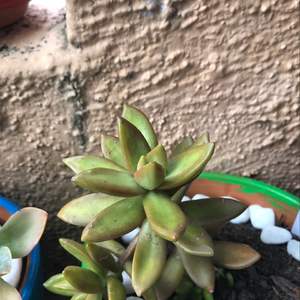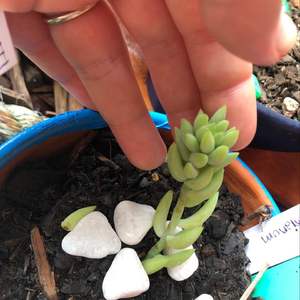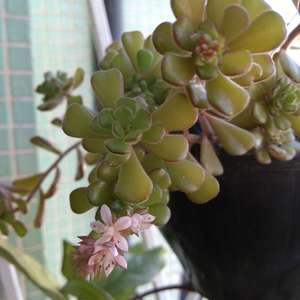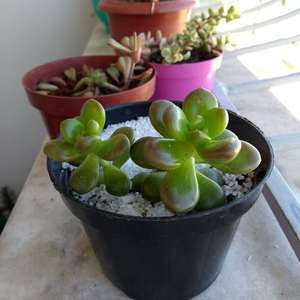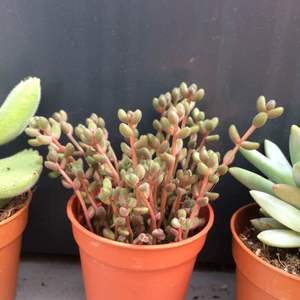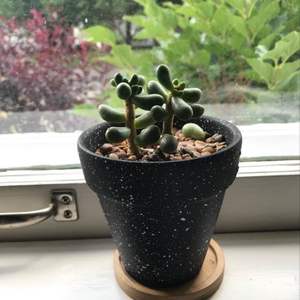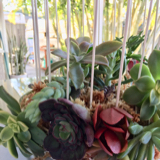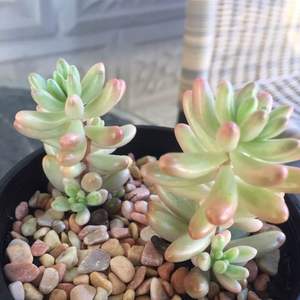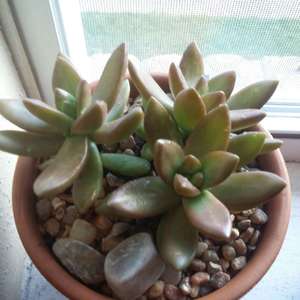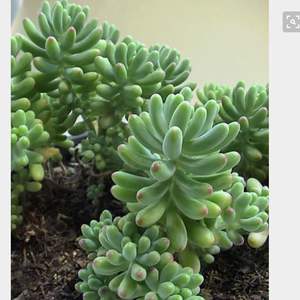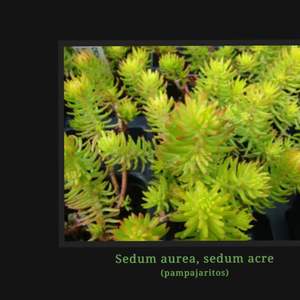文章
Miss Chen
2018年07月08日


06Sedum Spurium Picture
With a common name like "Dragon's Blood," one expects a lot of color out of this sedum....
But how much color you get depends on the amount of sunshine you give it, among other factors. The Sedum spurium 'Dragon's Blood' in the picture has reddish stems and pink flowers. Some types of Sedum spurium have red flowers and/or red leaves, as well.
Being a succulent, there is a fleshy feel to this plant that some gardeners may find appealing (if you're the type that likes to touch your plants frequently, as I do). Furthermore, as with most succulents, Sedum spurium is drought-tolerant.
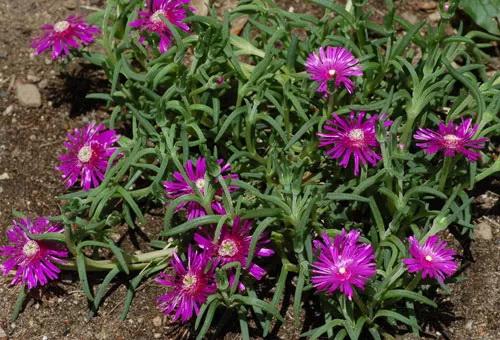
07Pictures of Cacti and Succulents: Ice Plant
This ice plant is one of the hardy succulents and can be left outside in winter all the way to planting zone 5. However, that's not how it received its name....
Rather, its the "icy" look of its foliage that earns it its name. An optical illusion is caused by the way light bounces off the tiny hairs on the surface of the ice plant's leaves, mimicking the appearance of ice crystals. There are a number of different types of ice plant. The ice plant in this picture is a type known as Delosperma cooperi.
If I had to choose between the succulents I've covered so far in terms of recommending the one that best combines beautiful flowers with attractive foliage, my selection would be ice plant.
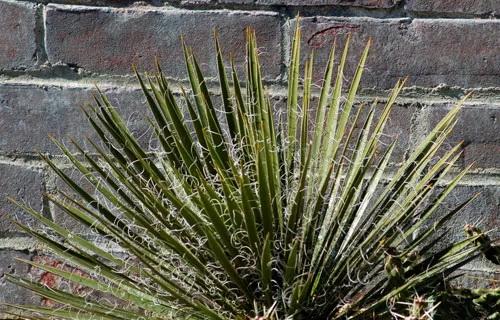
08Yucca Plant Picture
Photo of a yucca plant....
A dwarf plant, the sword-shaped leaves of the Yucca nana shown in the picture bear the threads (or "filaments") that give another type of yucca its scientific plant name: Yucca filamentosa, commonly known as "Adam's needle."

09Picture of a Joshua Tree
My picture of a Joshua tree above shows what Yucca brevifolia looks like. But you may wonder about the origin of the common name....
There's even a park in California named "Joshua Tree National Park." It is located in the Mojave Desert. So where does the name "Joshua" come from for this tree?
Andrew Alden explains that it was the Mormon pioneers who were responsible for naming the Joshua tree. The reference is to the Book of Joshua in the Old Testament (8:18–29). The passage states that a Hebrew army, wielding javelins (on an order from God to "stretch out the javelin that is in your hand"), took the city of Ai and "raised over it a great heap of stones."
Andrew asserts that "the name 'Joshua tree' surely derives from the stony landscape of the Mojave as well as the trees' outstretched arms and javelin-tip leaves."
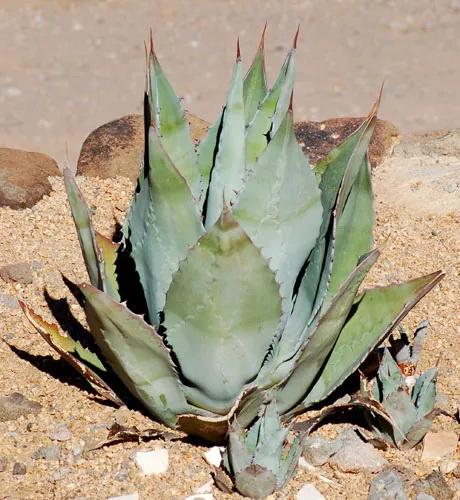
10Agave Picture
The plant in this picture is an agave, which also belong to a family of plants called "Agave"....
Confused? To clear up any confusion, simply look to see whether the name is capitalized or not. With a capital "A," I'm referring to a plant family. With a lower-case "a," I'm referring to a subset of that family. What other plants are in the Agave family, besides the agave? Well, one example is another plant I've been discussing in this photo gallery, namely, the yucca.
Remember, while plants in the Agave family may resemble cactus, they are, in fact, distinct from their more famous desert cousins. Both groups of plants are, however, succulents.
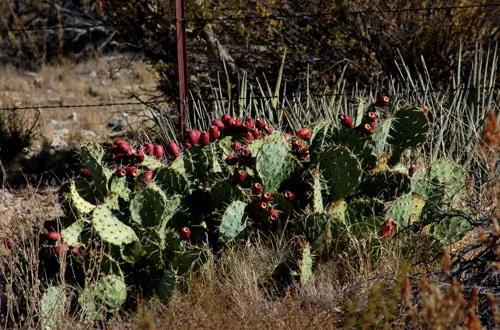
11Prickly Pear Cactus Fruit Picture
Prickly pear cactus has yellow flowers. But that only begins to tell the tale of this fascinating plant....
Prickly pear cactus foliage reaches at most a little over one foot tall. But it's not just a foliage plant or a flowering plant, as it also bears an edible fruit (the red you see in my picture). If you enjoy edible landscaping, you may wish to experiment with growing this tough plant. Its scientific plant name is Opuntia compressa.
It is one of the hardiest of the cacti. The photo above was taken in Arizona, but Opuntia is represented east of the Mississippi by Eastern prickly pear cactus.
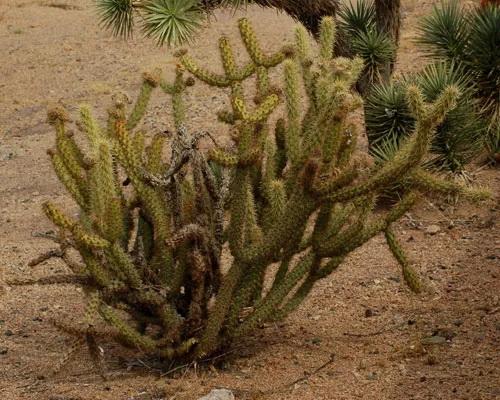
12Pictures of Cacti and Succulents: Cholla Cactus
It's sometimes hard to think of cacti, such as the cholla cactus, as "succulents," even though that's how they're classified....
That's because we also use the word "succulent" colloquially to refer to delicious, juicy food. And even though some cacti have edible parts, our first impression when we see such spiny plants is, "There's no way that's coming anywhere near my mouth!"
Nonetheless, the cholla cactus and other cacti do store water in their tissues -- the basic definition of a succulent plant.

13Barrel Cactus Picture
Some types of barrel cactus plants are popular as houseplants....
But for some of us, houseplants are the furthest thing from our minds when mention is made of "barrel cactus." If you watched Westerns as a kid, you probably recall seeing a thirsty cowboy slice off the top of a barrel cactus to get at the liquid stored inside. It's not just fiction: some species of Echinocactus barrel cacti do contain a reasonably palatable fluid (or so I am told) that is potable in an emergency.
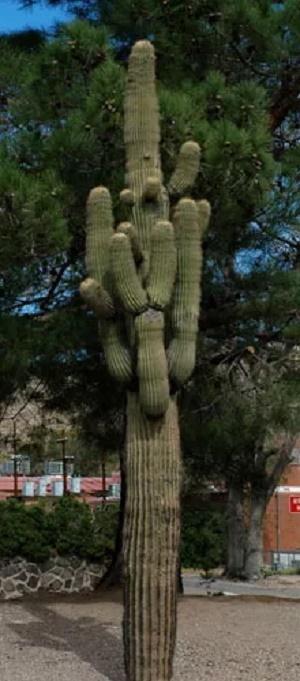
14Picture of Saguaro Cactus
An imposing plant, the saguaro cactus is an enduring symbol of the American West.
I snapped this photo of a saguaro cactus while surveying the Route 66 landscape.
0
1
成长记
Maritza Sanchez
2018年06月29日

I Nuevo agregado un Sedum Nossbaumerianum/ sedum naranja en mi jardín
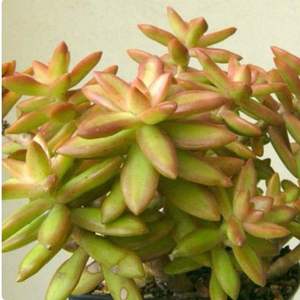

0
0
文章
Miss Chen
2018年06月29日

Sedum plants come in a wide variety of heights, colors, and forms. Showy Stonecrop, the taller plants in the genus Sedum, are popular garden plants that are extremely easy to grow. Although lovely, sedums are often taken for granted in the garden, partly because they don’t bloom until the fall, but also because they require so little care from the gardener. The thick leaves of these succulent plants are able to withstand both drought and rainy weather.
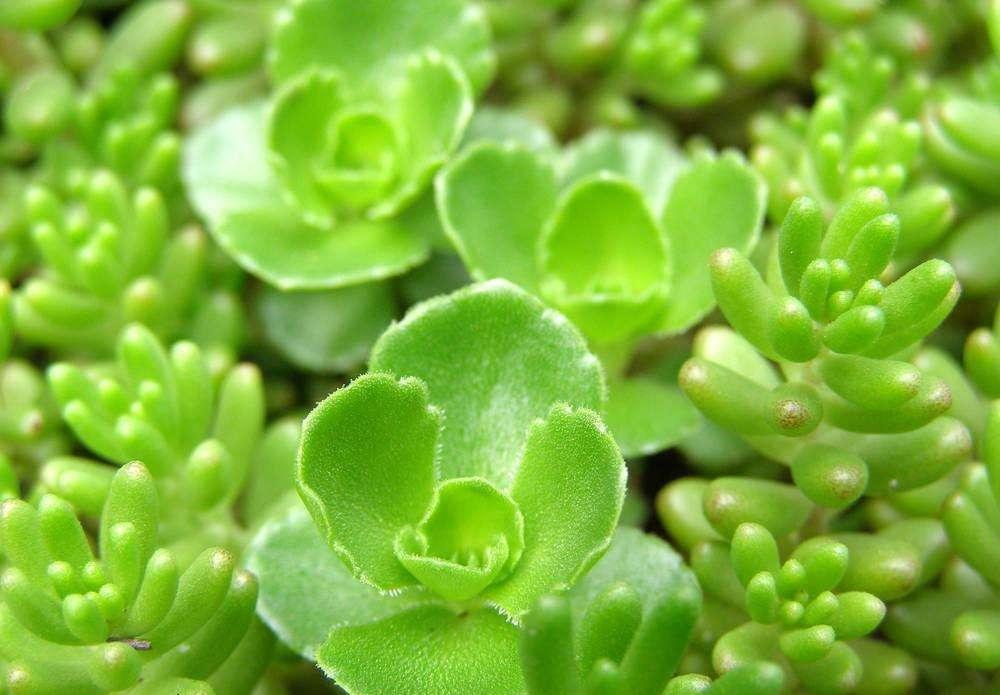
The flower buds form early and remain attractive well in winter. If the deer didn’t eat them, Sedum would be a perfect plant.
Growth Habit and Leaves: Border Stonecrops are a small section of the hundreds of species of Sedum. These taller growing Sedums have thick stems, fleshy leaves and tight flower heads that start out looking similar to heads of broccoli. Most are sturdy enough to stand upright on their own, with a few varieties that have a nice trailing quality, suitable for containers.
Flowers: Tall sedum flowers tend to come in shades of pink and mauve, that start out pale and deepen as they mature. The flower heads are attractive from bud through to their dried stage and are usually left standing tall throughout winter. The stems are even strong enough to hold a few inches of snow, capping the flower tops.
Botanical Name
Sedum
Common Names
Showy Stonecrop, Border Stonecrop
Hardiness Zones
Actual hardiness always has some variability, depending on the type of sedum you are growing and your growing conditions for the year.
However, sedum plants tend to be tough and adaptable. You can expect them to survive in USDA Hardiness Zones 3 - 10.
Mature Plant Size
Most tall sedum varieties stand upright and form a well-behaved mound, but there are a few, like "Matrona" that naturally flop over. In general, expect the mature size of your sedum plants to be 6 - 24 inches (H) x 12 - 24 inches (W).

Sun Exposure for Sedums
Sedums will grow best in full sun. They are very drought tolerant, but stonecrops can get sun scald in extremely hot, dry conditions. Sedums can be grown successfully in partial shade, but the plants might not be as sturdy and upright as they would be in full sun.
Bloom Time
Although sedum flowers don't open until late summer / early fall, the flower heads form early in the season. They start off a green color, like a broccoli bud, and slowly change color, usually from a pink to a mauve. The earlier, paler color is actually the flower in bloom. The mauve color is generally when the flower head is starting to dry. But sedum flowers tend to look good in all their stages, making them a great plant for a long season of interest.
Using Stonecrops in Your Garden Design
Sedum look especially good in a small mass planting that takes center stage in autumn. Because they look good all season, sedums are suitable for edging, as specimen plants and in containers. Smaller varieties are good choices for rock gardens and walls. Sedums make long-lasting cut flowers and are great for attracting butterflies and other pollinators.
The Best Sedum Varieties to Grow
Sedum "Autumn Joy" - Still a favorite because it is such a wonderful, beautiful performer.
Sedum spectabile "Brilliant" - A clearer pink than most Sedum flowers.
Sedum "Vera Jamison" - Burgandy leaves and mauve flowers with a trailing habit.
Sedum "Black Jack" - Deep burgundy, almost black foliage and strong upright habit.
Sedum "Cloud Nine" - Variegated Foliage
Sedum Growing Tips
Sedums are extremely easy to grow. They prefer a well-drained soil but can tolerate rainy weather as well. Extreme heat and lack of sun both cause Sedum to get a bit leggy. Pruning the plants back in early July will encourage them to get bushier and to grow sturdier, but it can result in smaller flowers.
Most of the sedum seed offered is for the low growing, ground cover varieties, not tall sedum. Taller sedums tend to be hybrids, and they won't grow true from seed. You will usually need to start off with plants or divisions.
Caring for Your Stonecrop Plants
Stonecrop flowers bloom only once; late in the season. Stonecrops do not need deadheading and often look good right through the winter. After several years, the center of Sedum plants will show signs of dying out, a sure sign they need dividing. Dividing them is a good idea at that point, to keep the plant vigorous.
Stem cuttings can be taken at any time, to propagate more Sedum.
More Drought Tolerant Succulent Plants to Grow
Sedums are not the only easy to grow succulent plants for your garden, although they do tend to be hardier than most other succulents. If you are interested in growing more of these fascinating drought-tolerant plants others you might try include Aeonium, Agave, Crassula, Echeveria, Euphorbia, Ice Plants (Lampranthus), Kalanchoe, and Senecio. Many of these also make great houseplants.

The flower buds form early and remain attractive well in winter. If the deer didn’t eat them, Sedum would be a perfect plant.
Growth Habit and Leaves: Border Stonecrops are a small section of the hundreds of species of Sedum. These taller growing Sedums have thick stems, fleshy leaves and tight flower heads that start out looking similar to heads of broccoli. Most are sturdy enough to stand upright on their own, with a few varieties that have a nice trailing quality, suitable for containers.
Flowers: Tall sedum flowers tend to come in shades of pink and mauve, that start out pale and deepen as they mature. The flower heads are attractive from bud through to their dried stage and are usually left standing tall throughout winter. The stems are even strong enough to hold a few inches of snow, capping the flower tops.
Botanical Name
Sedum
Common Names
Showy Stonecrop, Border Stonecrop
Hardiness Zones
Actual hardiness always has some variability, depending on the type of sedum you are growing and your growing conditions for the year.
However, sedum plants tend to be tough and adaptable. You can expect them to survive in USDA Hardiness Zones 3 - 10.
Mature Plant Size
Most tall sedum varieties stand upright and form a well-behaved mound, but there are a few, like "Matrona" that naturally flop over. In general, expect the mature size of your sedum plants to be 6 - 24 inches (H) x 12 - 24 inches (W).

Sun Exposure for Sedums
Sedums will grow best in full sun. They are very drought tolerant, but stonecrops can get sun scald in extremely hot, dry conditions. Sedums can be grown successfully in partial shade, but the plants might not be as sturdy and upright as they would be in full sun.
Bloom Time
Although sedum flowers don't open until late summer / early fall, the flower heads form early in the season. They start off a green color, like a broccoli bud, and slowly change color, usually from a pink to a mauve. The earlier, paler color is actually the flower in bloom. The mauve color is generally when the flower head is starting to dry. But sedum flowers tend to look good in all their stages, making them a great plant for a long season of interest.
Using Stonecrops in Your Garden Design
Sedum look especially good in a small mass planting that takes center stage in autumn. Because they look good all season, sedums are suitable for edging, as specimen plants and in containers. Smaller varieties are good choices for rock gardens and walls. Sedums make long-lasting cut flowers and are great for attracting butterflies and other pollinators.
The Best Sedum Varieties to Grow
Sedum "Autumn Joy" - Still a favorite because it is such a wonderful, beautiful performer.
Sedum spectabile "Brilliant" - A clearer pink than most Sedum flowers.
Sedum "Vera Jamison" - Burgandy leaves and mauve flowers with a trailing habit.
Sedum "Black Jack" - Deep burgundy, almost black foliage and strong upright habit.
Sedum "Cloud Nine" - Variegated Foliage
Sedum Growing Tips
Sedums are extremely easy to grow. They prefer a well-drained soil but can tolerate rainy weather as well. Extreme heat and lack of sun both cause Sedum to get a bit leggy. Pruning the plants back in early July will encourage them to get bushier and to grow sturdier, but it can result in smaller flowers.
Most of the sedum seed offered is for the low growing, ground cover varieties, not tall sedum. Taller sedums tend to be hybrids, and they won't grow true from seed. You will usually need to start off with plants or divisions.
Caring for Your Stonecrop Plants
Stonecrop flowers bloom only once; late in the season. Stonecrops do not need deadheading and often look good right through the winter. After several years, the center of Sedum plants will show signs of dying out, a sure sign they need dividing. Dividing them is a good idea at that point, to keep the plant vigorous.
Stem cuttings can be taken at any time, to propagate more Sedum.
More Drought Tolerant Succulent Plants to Grow
Sedums are not the only easy to grow succulent plants for your garden, although they do tend to be hardier than most other succulents. If you are interested in growing more of these fascinating drought-tolerant plants others you might try include Aeonium, Agave, Crassula, Echeveria, Euphorbia, Ice Plants (Lampranthus), Kalanchoe, and Senecio. Many of these also make great houseplants.
0
0



